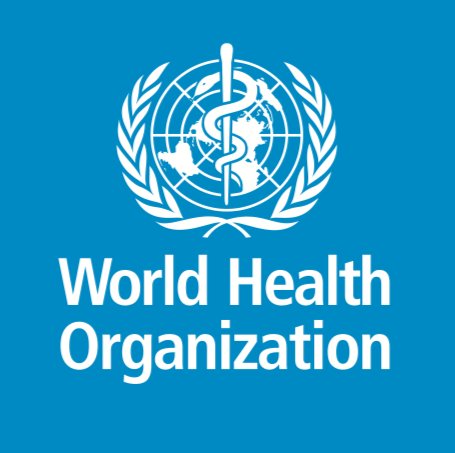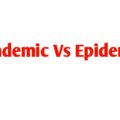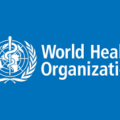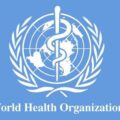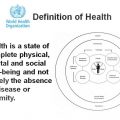The World Health Organization defines a pandemic as an epidemic occurring worldwide, or over a very wide area, crossing international boundaries and usually affecting a large number of people”. The classical definition includes nothing about population immunity, virology, or disease severity. SEE: List of Worst Pandemics In History
Following the Outbreak of coronavirus, The World Health Organization declared the outbreak a Public Health Emergency of International Concern on 30 January 2020, and a pandemic on 11 March 2020. However, according to The Lancet, the process by which WHO decides whether to declare a Public Health Emergency of International Concern (PHEIC) or pandemic under the International Health Regulations has drawn criticism. ALSO SEE: World Health Organization(WHO) Definition Of Health
How The World Health Organization (WHO) Declares A Pandemic
The International Health Regulations (IHR) have been the governing framework for global health security since 2007. According to WHO, some serious public health events that endanger international public health may be determined under the Regulations to be public health emergencies of international concern (PHEIC). The term Public Health Emergency of International Concern is defined in the IHR (2005) as “an extraordinary event which is determined, as provided in these Regulations:
- to constitute a public health risk to other States through the international spread of disease; and
- to potentially require a coordinated international response”. This definition implies a situation that: is serious, unusual, or unexpected; carries implications for public health beyond the affected State’s national border and may require immediate international action.
The responsibility of determining whether an event is within this category lies with the WHO Director-General and requires the convening of a committee of experts – the IHR Emergency Committee. This committee advises the Director-General on the recommended measures to be promulgated on an emergency basis, known as temporary recommendations. Temporary recommendations include health measures to be implemented by the State Party experiencing the PHEIC, or by other States Parties, to prevent or reduce the international spread of disease and avoid unnecessary interference with international traffic.
The Emergency Committee also gives advice on the determination of the event as a PHEIC in circumstances where there is inconsistency in the assessment of the event between the Director-General and the affected country/countries. The Emergency Committee continues to provide advice to the Director-General throughout the duration of the PHEIC, including any necessary changes to the recommended measures and on the determination of PHEIC termination. WHO maintains an IHR roster of experts and the members of an IHR Emergency Committee are selected from this roster and/or WHO expert advisory panels and committees. At least one member of the Emergency Committee should be an expert nominated by a State Party within whose territory the event arises.
How many Public Health Emergency of International Concern has been declared since 2009?
Records show that there have been six (6) PHEIC declarations since 2009 they include;
H1N1 influenza virus
In the spring of 2009, a novel influenza A (H1N1) virus emerged. It was detected first in Mexico, North America. It spread quickly across the United States and the world. On 26 April 2009, more than one month after its first emergence, the initial PHEIC was declared when the H1N1 (or swine flu) pandemic was still in phase three. Within three hours on the same day, the WHO website received almost two million visits, necessitating a dedicated website for the swine influenza pandemic. At the time H1N1 had been declared a PHEIC, at that time it had occurred in only three countries.
Therefore, it was argued that the declaration of the H1N1 outbreak as a PHEIC, was fueling public fear. However, a 2013 study sponsored by the WHO estimated that although the H1N1 pandemic was similar in magnitude to seasonal influenza, it resulted in the loss of more life-years than seasonal flu, due to a shift toward mortality among persons less than 65 years of age.
2014 polio declaration
The second PHEIC was the 2014 polio declaration, issued in May 2014 with the resurgence of wild polio after its near-eradication, deemed “an extraordinary event”. The status achieved, as global eradication, was deemed to be at risk with small numbers of cases in Afghanistan, Pakistan, and Nigeria.
In October 2019, continuing cases of wild polio in Pakistan and Afghanistan, in addition to new vaccine-derived cases in Africa and Asia, was reviewed and remains a PHEIC. It was extended on 11 December 2019.
2014 Ebola declaration
Confirmed cases of Ebola were being reported in Guinea and Liberia in March 2014 and Sierra Leone by May 2014. On Friday, 8 August 2014, following the occurrence of Ebola in the United States and Europe and with the already intense transmission ongoing in three other countries for months, the WHO declared its third PHEIC in response to the outbreak of Ebola in Western Africa. Later, one review showed that a direct impact of this epidemic on America escalated a PHEIC declaration. It was the first PHEIC in a resource-poor setting.
2016 Zika virus declaration
On 1 February 2016, the WHO declared its fourth PHEIC in response to clusters of microcephaly and Guillain–Barré syndrome in the Americas, which at the time were suspected to be associated with the ongoing 2015–16 Zika virus epidemic. Later research and evidence bore out these concerns; in April, the WHO stated that “there is scientific consensus that Zika virus is a cause of microcephaly and Guillain–Barré syndrome.” This was the first time a PHEIC was declared for a mosquito‐borne disease. This declaration was lifted on 18 November 2016.
2018–20 Kivu Ebola declaration
In October 2018 and then later in April 2019, the WHO did not consider the 2018–20 Kivu Ebola epidemic to be a PHEIC. The decision was controversial, with Michael Osterholm, director of the Center for Infectious Disease Research and Policy (CIDRAP) responding with disappointment and describing the situation as “an Ebola gas can sitting in DRC that’s just waiting for a match to hit it”, while the WHO panel were unanimous in their decision that declaring it a PHEIC would not give any added benefit. The advice against declaring a PHEIC in October 2018 and April 2019, despite the criteria for doing so appearing to be met on both occasions, has led to the transparency of the IHR EC coming into question. The language used in the statements for the Kivu Ebola epidemic has been noted to be different. In October 2018, the EC stated “a PHEIC should not be declared at this time”. However, in the 13 previously declined proposals for declaring a PHEIC, the resultant statements quoted “the conditions for a PHEIC are not currently met” and “does not constitute a PHEIC”. In April 2019, they stated that “there is no added benefit to declaring a PHEIC at this stage”, a notion that is not part of the PHEIC criteria laid down in the IHR.
After confirmed cases of Ebola in neighboring Uganda in June 2019, Tedros Adhanom, the director-general of the WHO, announced that the third meeting of a group of experts would be held on 14 June 2019 to assess whether the Ebola spread had become a PHEIC. The conclusion was that while the outbreak was a health emergency in the Democratic Republic of the Congo (DRC) and the region, it did not meet all the three criteria for a PHEIC.
Despite the number of deaths reaching 1,405 by 11 June 2019 and 1,440 by 17 June 2019, the reason for not declaring a PHEIC was that the overall risk of international spread was deemed to be low, and the risk of damaging the economy of the DRC was high. Adhanom also stated that declaring a PHEIC would be an inappropriate way to raise money for the epidemic. Following a visit to the DRC in July 2019, Rory Stewart, the UK’s DfID minister, called for the WHO to declare it an emergency.
Acknowledging a high risk of spread to the capital of North Kivu, Goma, a call for a PHEIC declaration was published on 10 July 2019 in the Washington Post by Daniel Lucey and Ron Klain (the former United States Ebola response coordinator). Their declaration stated that “in the absence of a trajectory toward extinguishing the outbreak, the opposite path—severe escalation—remains possible. The risk of the disease moving into nearby Goma, Congo—a city of 1 million residents with an international airport—or crossing into the massive refugee camps in South Sudan is mounting. With a limited number of vaccine doses remaining, either would be a catastrophe”. Four days later, on 14 July 2019, a case of Ebola was confirmed in Goma, which has an international airport and a highly mobile population. Subsequently, the WHO announced a reconvening of a fourth EC meeting on 17 July 2019, when they officially announced it “a regional emergency, and by no means a global threat” and declared it as a PHEIC, without restrictions on trade or travel.
2019–20 COVID-19 declaration
On 30 January 2020, the WHO declared the outbreak of COVID-19, centered on Wuhan in central China, a PHEIC. On the date of the declaration, there were 7,818 cases confirmed globally, affecting 19 countries in five of the six WHO regions. Previously, the WHO had held EC meetings on 22 and 23 January 2020 regarding the coronavirus pandemic, but it was determined at that time that it was too early to declare a PHEIC, given the lack of necessary data and the (then) scale of global impact.
The WHO recognized the spread of COVID-19 as a pandemic on 11 March 2020. Europe, Iran, the United States, South Korea, Latin America, and Japan reported a surge of cases and the total number quickly passed China. The third meeting of the emergency committee convened on 30 April 2020, the fourth on 31 July, the fifth on 29 October, and the sixth on 14 January 2021, all of which agreed that the outbreak continued to constitute a PHEIC. The World Health Organization declared the outbreak a Public Health Emergency of International Concern on 30 January 2020, and a pandemic on 11 March 2020.
PHEIC Non-declarations
PHEIC was not invoked with the Middle Eastern Respiratory Syndrome (MERS) outbreak in 2013. Originating in Saudi Arabia, MERS reached more than 24 countries and resulted in more than 580 deaths by 2015, although most cases were in hospital settings rather than sustained community spread. As a result, what constitutes a PHEIC has been unclear. As of May 2020, there had been 876 deaths. Read: Difference Between Pandemic vs Epidemic vs Outbreak

